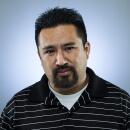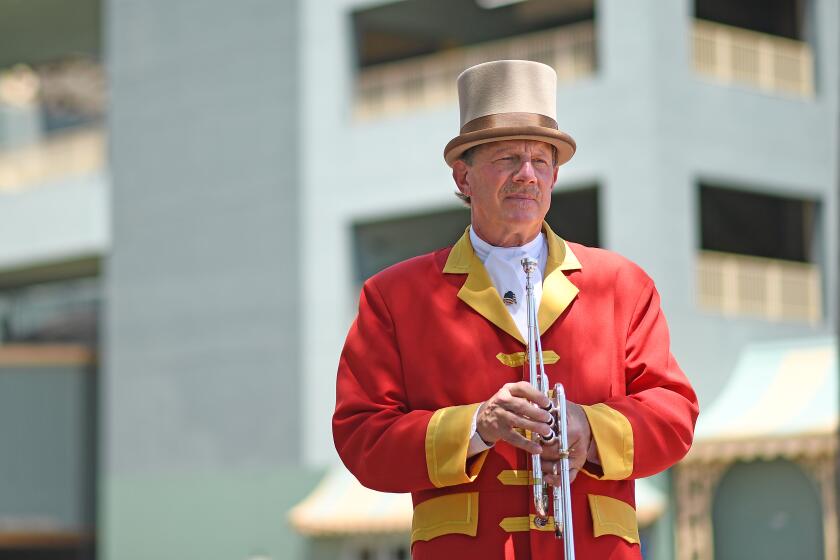Column: Santa Anita jockeys find a stay-at-home order that they can live with
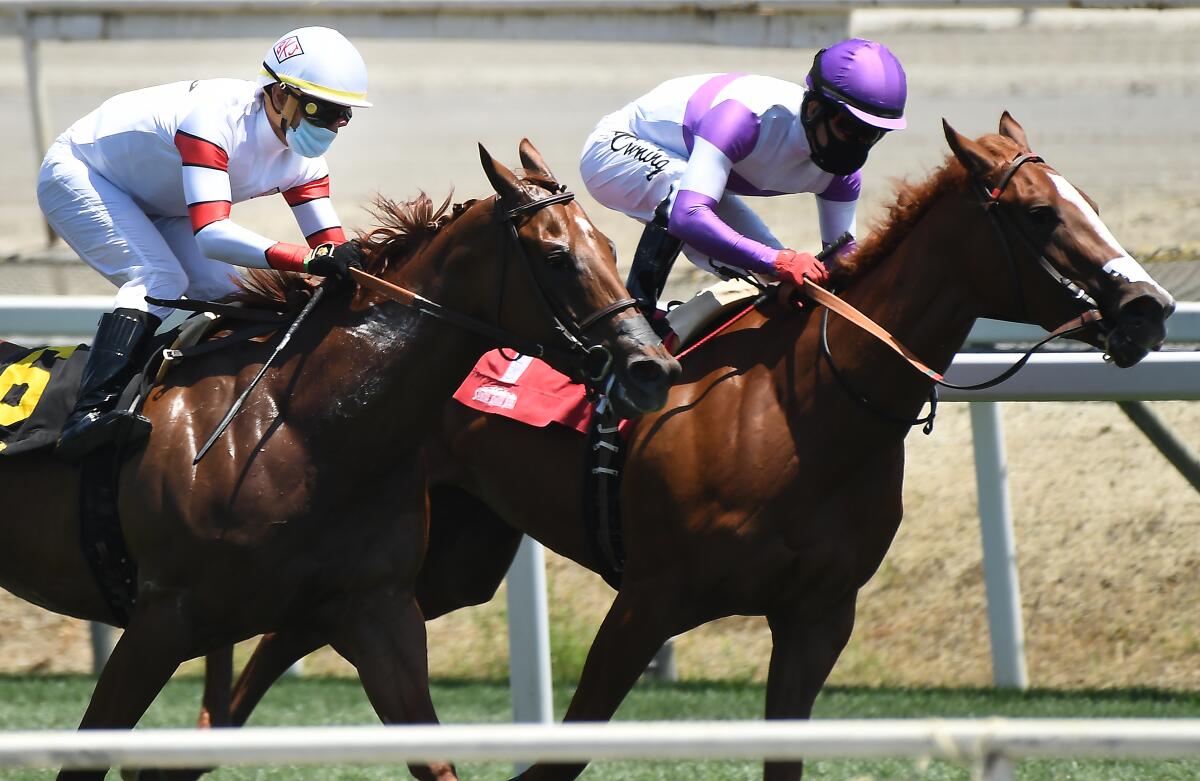
- Share via
The break-in occurred early in the morning, Aaron Gryder standing on a flipped-over trash can as he tried to squeeze his body through a trailer window that didn’t completely open. The acrobatic forced entry was made at the request of fellow jockey Drayden Van Dyke, who locked his keys inside.
Nearby, Nate Newby chuckled as he watched.
Newby, the assistant general manager at Santa Anita Park, had a spare key. He kept that information to himself.
“It was too funny,” Newby said. “I didn’t want to interrupt what was going on.”
Gryder laughed when offered Newby’s recollection of the incident.
“He was watching?” Gryder asked.
What started as an experiment fraught with uncertainty has become one of the most memorable weeks of Gryder’s career.
A West Covina native residing in Pasadena, the 49-year-old Gryder always has considered Santa Anita Park his home track. Now, it’s literally his home, as he and more than 20 other riders are spending their second weekend in a fenced-in section of the parking lot near the jockey’s room.
These days, amid the coronavirus closure, Santa Anita Park racetrack bugler Jay Cohen belts out his call to the post for an audience of one.
The arrangement is part of a COVID-19 protocol that was implemented to resume spectator-free racing. Housing the jockeys overnight on the property alleviated concerns voiced by the Los Angeles County Department of Public Health about their comings and goings on race days.
Riders are tested for the coronavirus on Wednesday; if they test negative, they move into the jockey’s colony Friday and remain there until racing ends that weekend.
“This is glorified camping, man,” said Mike Smith, who rode Justify to the Triple Crown in 2018.
The lodging is opulent, as the shutdown of the entertainment industry resulted in the availability of Star Waggons trailers typically found on movie and television locations. The trailers are shared by two jockeys, who each have their own entrance and are divided by a wall.
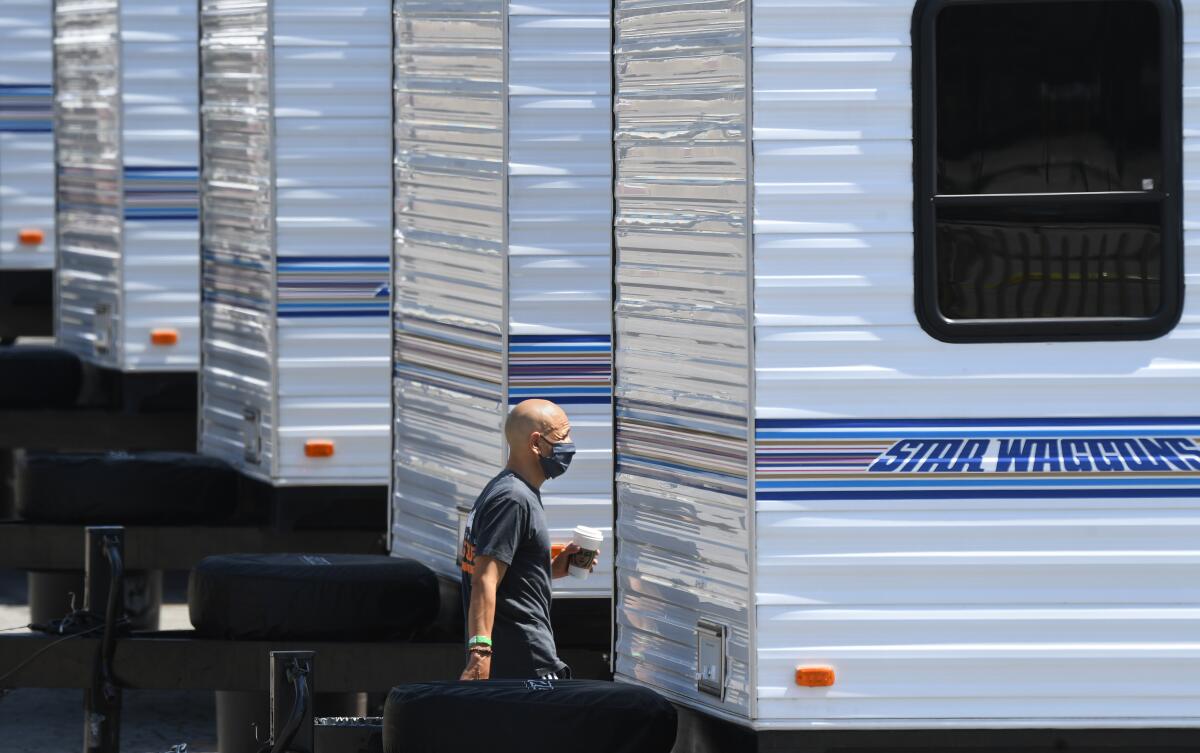
“We’re living the dream right now,” said Victor Espinoza, the colony’s other Triple Crown jockey.
The trailers have provided the jockeys with comfort, but the communal aspect of the setup is what has made this a transformative experience. Ordinarily, most of their interactions are limited to the jockey’s room before and after races. Some might hang out in the evenings, some might even live together. But never has it been like this, where they are together around the clock.
After the track re-opened on May 15, the jockeys gathered in the evening in the premium 100-to-1 Club and shared a meal catered by The Derby, a local steakhouse frequented by the horse racing community. They monitored out-of-town races and played cards. They watched “The Wolf of Wall Street.”
The 54-year-old Smith soon found himself holding court, advising younger jockeys to take care of their money. The scene reminded him of his youth when he listened to such veteran riders as Pat Day and Laffit Pincay Jr. share their experiences.
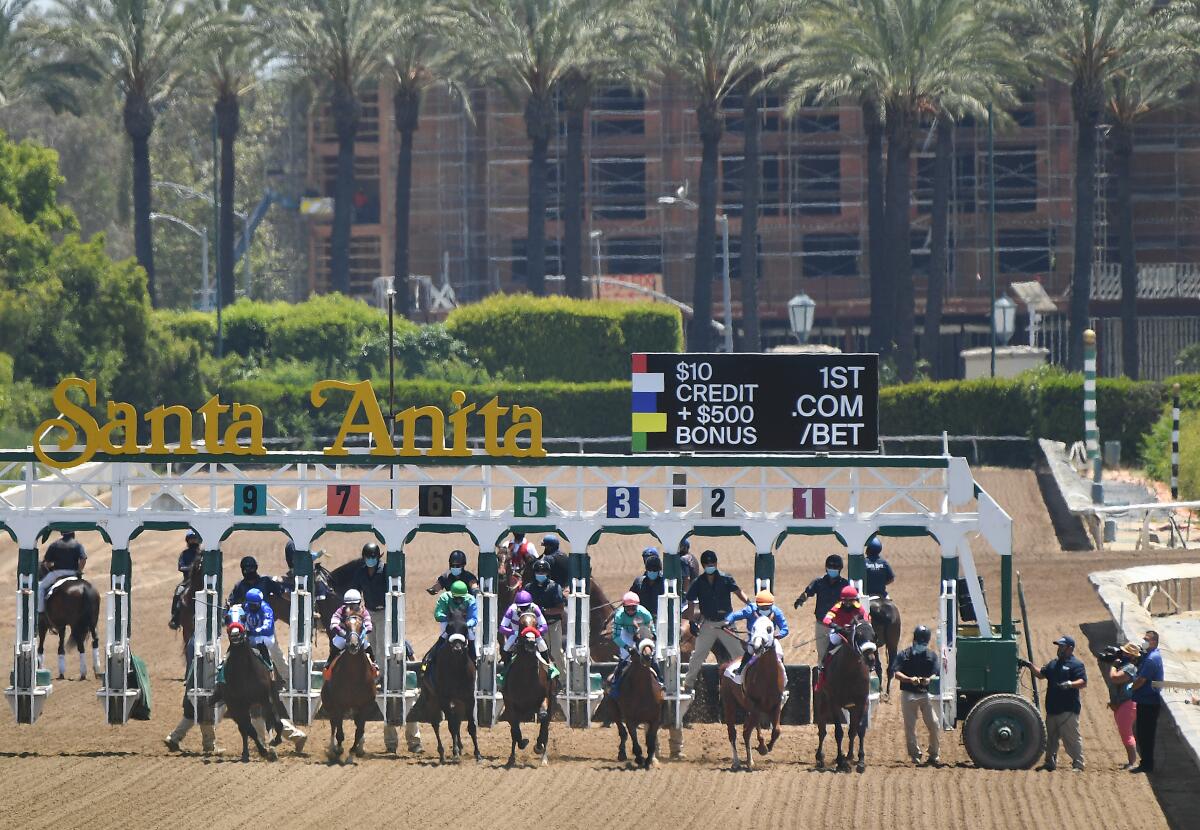
“Back in the day,” Smith said, “I would have given anything to do this.”
That includes that unwelcome wake-up call he received the next morning. Smith didn’t have a morning workout scheduled, but Gryder and Van Dyke did. Before heading to the paddock area, Gryder knocked on Smith’s door. Smith answered half-asleep.
“Hey, can you come outside and play today?” Van Dyke said with a giggle.
Hard to believe now, but Smith was initially skeptical of the plan to live on site.
Jockeys don’t have contracts. They aren’t paid unless they ride.
The third-highest earning jockey in history, Smith was free of such concerns. He said he was compelled to race again this season out of obligation to the sport.
“Owners are paying a lot of money to keep their horses here,” Smith said. “If we don’t give them the opportunity to get that money back, we don’t have anything.”
The objective of Santa Anita’s parent company, the Stronach Group, was to generate the income necessary to continue operating the stables, according to Aidan Butler, chief strategy officer. The area is home to about 1,700 horses and nearly 750 people who take care of them. Many of the backstretch workers rely on an on-site clinic for healthcare.
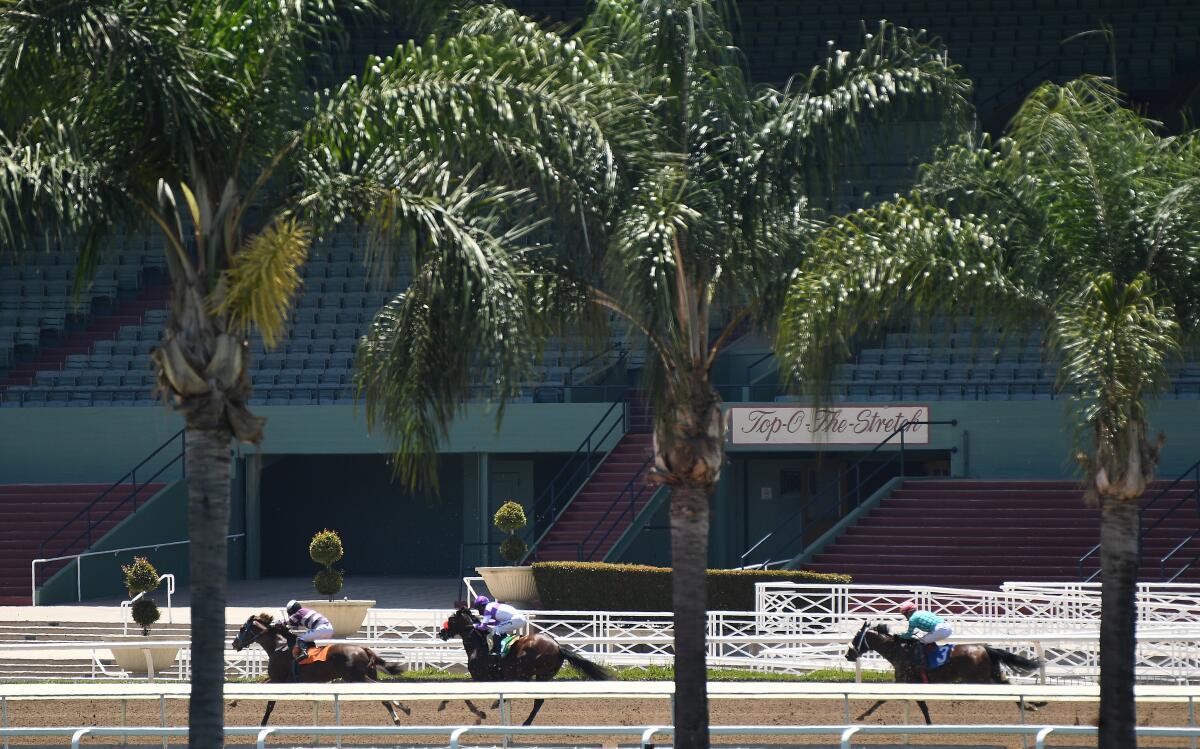
The collapse of that ecosystem could threaten the future of the track.
Twenty-five jockeys were invited to race on the weekend of May 15. Every one accepted.
There are 24 riders in the encampment on this Memorial Day weekend, which includes racing on Monday.
The safety measures were of utmost importance to Gryder, who was particularly wary of the coronavirus. A close friend of his was infected with COVID-19 and spent 64 days in a hospital, including 31 on a ventilator.
“It is more serious than some would believe,” Gryder said.
No visitors are allowed in the trailers. Jockeys are prohibited from entering the stable area and mount their horses in the paddock area. Outside of a handful of trainers and security guards, they have no audience, racing in virtual silence. There is no winner’s circle; the first-place horse and his jockey quickly pose for a picture after their race and move on.
Gryder was pleased to learn he would be sharing his trailer with Smith, his longtime friend and former roommate. Gryder joked that when Smith calls his wife, he places a cup on the dividing wall to listen in on their conversation.
“If I get married again, I’m going to use a couple of those [lines],” Gryder said.
Smith made a crack about how he and Espinoza are neighbors. They’re also neighbors in Sierra Madre.
The Triple Crown picture got clearer when it was announced that the Preakness will be held Oct. 3. All that’s still unknown is the date of the Belmont Stakes.
“We don’t get along,” Espinoza said, jokingly. “I don’t learn anything [from him]. I just learn how to beat him.”
The banter is continuous, but friendly.
Gryder has noticed a change in the horses.
“The horses are athletes,” he said. “They were happy to get out there.”
Over three days of racing last weekend, more than $37 million was wagered online and via simulcast. The first-day handle was $11.2 million, up from $7 million on the same day last year.
Most of the jockeys returned home after the races Sunday. Gryder, who lives alone, remained on the grounds for three more nights.
He stayed in shape by running on the 320-acre property. He chipped some golf balls and read books.
He was home.
More to Read
Go beyond the scoreboard
Get the latest on L.A.'s teams in the daily Sports Report newsletter.
You may occasionally receive promotional content from the Los Angeles Times.
